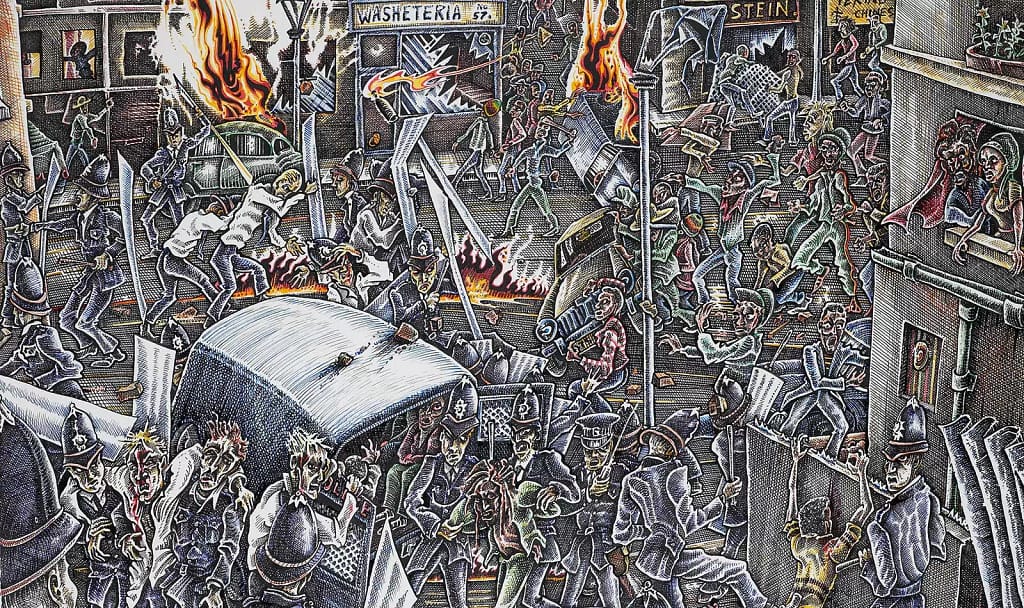It’s perhaps a lazy cliché to start this piece on Brixton and surrounds to launch straight into talking about the ‘riots’, the fighting, the pain and anger that this part of London has seen over the years.
And yet it also acts as a microcosm of the whole experience of living in the ruins of what started the steady, inexorable decline in Thatcher’s Britain. Especially for POC and other marginalised communities, the poor, LGTBQ+, immigrant and refugee. And of course, like all clichés, the truth is there.
Whilst The Clash’ “Guns of Brixton” prefigures by a couple of years, the 1980’s uprisings, the lyrics foreshadow and nail-down the anger and feelings of discontent born out of the brutish, heavy-handedness of the police, the use of SUS laws to attack the —mainly youth— black community and the effects of the recession. The lyrics reference a Brixton-born son of Jamaican immigrants who “feel[s] like Ivan…at the end of The Harder they Come” (speaking to Ivanhoe Martin‘s death in the 1972 reggae film The Harder They Come.)
This audio of Alex Wheatle talking on the Museum Of London site about his experiences at the time:
describes the different elements of this physical damage and highlights the complex nature of the destruction, noting ‘there was a bit of despair after the riots as we realised we had laid waste to our community’. This demonstrates how people must have felt as they realised more problems were to come now the community had to rebuild itself. On the one hand, Wheatle speaks of ‘burnt houses, burnt residences’ describing how the Black communities’ homes had been damaged. On the other hand, specific establishments were destroyed as a result of their racist behaviours. For example, Wheatle describes a racist pub being burnt down by participants of the uprising, which had specifically refused to serve Black customers. The Museum of London’s object collection holds a drawing by Mike Hawthorne of the Atlantic pub on the corner of Brixton’s Atlantic Road and Coldharbour Lane, which was one of the first buildings to be attacked. A former customer recalled that ‘the white man who owned the pub would break your glass after you had finished using it’.
The artist Mike Hawthorne produced this work in 1987, based on sketches he’d made during the ‘81 fighting.

Alex goes on to explain that to some extent the damage to property was a catharsis for the community as it showed they were no longer prepared to simply accept racist behaviour. He elaborates on this in the interview saying ‘there was a bit of pride too…we are going to resist’.
This was the point of the uprising: Black people refused to suffer injustices from the police and the state any longer.
I’m going to write about food and fun. That’s also Brixton. And it’s in no way a memorial. We will win. “Everything for everyone” is possible. We simply have to defeat capitalism. As as the great Ursula K Le Guin said so cogently:
We live in capitalism, its power seems inescapable — but then, so did the divine right of kings. Any human power can be resisted and changed by human beings. Resistance and change often begin in art.
So, onwards in solidarity, comrades.